The History of Wigs(From Edgypt to 20th Century)
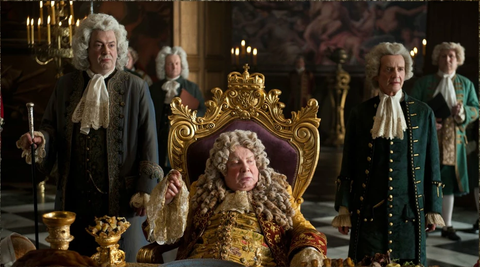
With the development of economy and society, people pay more and more atttention to their appearance. This is a good sign for us, because when we sloved the basic needs of life, then we can only have more time and money to think about appearance.
Today, I’d like to introduce you to a special and popular beauty accessory – wigs.
The origin of wigs can be traced back to ancient civilizations, and their use has evolved over time.
Ancient Egypt:
Wigs have a long history in ancient Egypt and were a common accessory for both men and women. Here are some key points about the history of wigs in ancient Egypt:
Symbolism and Status: Wigs held cultural and symbolic significance. They were often associated with cleanliness and were worn by people of various social classes. Wearing a wig was also a symbol of wealth and status, as it indicated that the person could afford such a luxury.
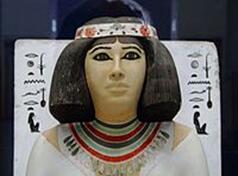
Hygiene and Comfort: In the hot climate of ancient Egypt, shaving one's head and wearing a wig could be more comfortable and hygienic. It helped to prevent lice infestation and provided relief from the heat. Wigs were made from various materials, including human hair, animal hair, and plant fibers.
Fashion and Style: Wigs were not just functional; they were also a fashion statement. Different styles and lengths of wigs were worn depending on the occasion and social status. Elaborate and ornate wigs were common among the elite.
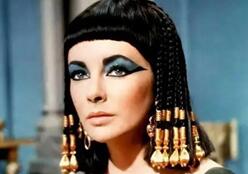
Ceremonial and Religious Use: Wigs were worn during religious ceremonies and rituals. They played a role in the religious practices of the time, and certain hairstyles or wig styles were associated with specific deities or rituals.
Materials and Construction: Wigs were crafted using a variety of materials, with human hair being highly prized. Wigs were often woven onto a net, and some were adorned with decorative elements such as beads and jewels. The construction of wigs was a skilled art, and wig makers were valued members of society.
Burial Customs: Wigs were also placed in tombs as part of burial customs. The belief was that the deceased would need these wigs in the afterlife. Some tombs contained a variety of wigs, reflecting the individual's social status and personal preferences.
Overall, wigs in ancient Egypt served a multifaceted purpose, ranging from practicality and hygiene to symbolism, fashion, and religious significance. They were an integral part of daily life and culture in this ancient civilization.
16th Century:
The 16th century saw the widespread use of wigs in Europe, and it became a significant fashion trend during this period. Here are some key points about the history of wigs in the 16th century:
Origins: The use of wigs became popular in Europe during the 16th century, primarily in France. The trend is often associated with the reign of Queen Elizabeth I in England and King Louis XIII in France. Wigs were initially worn by the nobility and the upper classes.
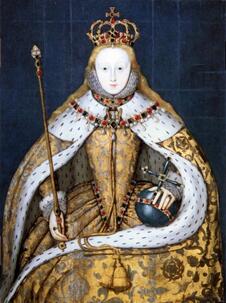
Hygiene and Head Lice: The 16th century was a time when personal hygiene practices were not as advanced as they are today. As a result, head lice were a common problem. Wearing wigs helped to cover natural hair and protect against lice infestation. It also allowed for the wig wearer to maintain a cleaner and more polished appearance.
Versailles Fashion Influence: The trend of wearing wigs gained momentum during the reign of Louis XIV of France. The French court, especially at the Palace of Versailles, became a center of fashion influence. Wigs were worn by both men and women, and their styles became increasingly elaborate.
Materials and Styles: Wigs in the 16th century were crafted from a variety of materials, including human hair, horsehair, and even wool. The styles ranged from short and curly to long and flowing. Wigs were often powdered with starch or other substances to achieve a fashionable white or gray color.
Social Status and Fashion Statements: Wearing wigs became a status symbol, indicating wealth and social standing. The higher the wig, the more elaborate, and the whiter the color, the more fashionable. It was not uncommon for people to have multiple wigs to suit different occasions.
Legal and Professional Use: In some European countries, wearing wigs became associated with the legal and professional classes. Judges, lawyers, and other professionals began wearing wigs as part of their official attire. This practice continued well into the 17th and 18th centuries.
Decline of the Wig Trend: The popularity of wigs began to decline towards the end of the 17th century, but they continued to be worn by certain segments of society. By the 18th century, wigs had become less common as hairstyles shifted to more natural and simpler forms.
The 16th century marked a significant period in the history of wigs, with their use becoming a prominent fashion statement and status symbol in European society.
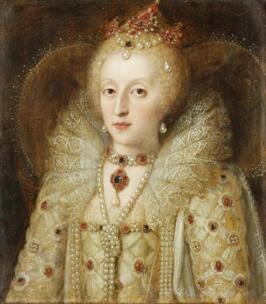
17th and 18th Centuries:
The 17th and 18th centuries were a peak period for the popularity and evolution of wigs in Europe. Wigs became an integral part of fashion and were worn by both men and women across various social classes. Here are some key points about the history of wigs in the 17th and 18th centuries:
Versailles Influence: The court of King Louis XIV of France at the Palace of Versailles played a crucial role in popularizing wigs during the late 17th century. The king himself started wearing wigs to cover his premature baldness, setting a trend that quickly spread throughout the French aristocracy. Wigs became a symbol of status and fashion.

Elaborate Styles: Wigs of this period were characterized by elaborate and towering styles. The higher and more ornate the wig, the more fashionable it was considered. Wigs were often powdered with starch to achieve a white or gray color, and they could be adorned with ribbons, feathers, and other embellishments.
Social Status: Wearing wigs became a sign of social status and privilege. The higher the social rank, the more extravagant and intricate the wig. Different styles of wigs were associated with specific social classes, and people often owned multiple wigs for different occasions.
Powdered Wigs (Perukes): Powdered wigs, also known as perukes, became immensely popular during the 18th century. The powdering process involved using starch or other substances to achieve a distinctive white or gray color. This fashion extended beyond France and became prevalent in other European courts and among the upper classes.
Legal and Professional Wigs: Wigs became an essential part of the formal attire for legal and professional figures. Judges, barristers, and other professionals adopted the use of wigs in courtrooms and official settings. The tradition of legal wigs continued well into the 19th century.
Men's Wigs: Men's wigs during this period were particularly notable for their length and volume. Wigs often had long curls or waves, and some were tied back into a queue or ponytail. The fashion for men's wigs varied from country to country.

Women's Wigs: Women's wigs were also fashionable and diverse. They could range from large and curly to more restrained and elegant styles. Wigs were often part of a woman's formal attire and were worn for special occasions.
Decline of the Wig Trend: Toward the end of the 18th century, the popularity of wigs began to decline. Changing fashion trends and cultural shifts led to a preference for more natural hairstyles. The French Revolution marked a significant turning point, as wigs were associated with the aristocracy and were rejected by those advocating for equality.
The 17th and 18th centuries were a golden age for wigs in Europe, with these elaborate hairpieces becoming an integral aspect of fashion, social identity, and even professional attire.
20th Century:
The 20th century witnessed significant changes in fashion and hairstyling trends, and the use of wigs underwent various transformations during this period. Here are some key points about the history of wigs in the 20th century:

Early 20th Century: At the beginning of the century, wigs were still worn by some individuals for formal occasions, particularly in high society. However, natural hairstyles started to become more popular, and the use of wigs declined compared to previous centuries.
Film and Entertainment: Wigs continued to be used extensively in the film and entertainment industry. Actors and actresses often wore wigs to achieve specific character looks or to adapt to changing roles. Wigs provided a versatile and convenient way to create diverse hairstyles for cinematic purposes.
Cultural Movements: The mid-20th century saw the rise of various cultural movements, including the counterculture of the 1960s and 1970s. Natural and unstyled hair became a symbol of rebellion and individualism during this period, leading to a decrease in the popularity of wigs.
Wig Revival in the 1980s: In the 1980s, there was a resurgence of interest in wigs. This era saw a return to more glamorous and stylized fashion, and wigs became a popular accessory once again. Big, bold hairstyles were in vogue, and wigs allowed people to experiment with different looks.
Medical and Cosmetic Use: Wigs also played a crucial role in the medical and cosmetic fields during the 20th century. Individuals experiencing hair loss due to medical conditions or treatments such as chemotherapy turned to wigs as a solution. Wigs offered a practical and aesthetically pleasing way to cope with hair loss.
Fashion and Pop Culture: Wigs remained a part of fashion and pop culture, with celebrities and performers often using them to change their appearance for performances or public appearances. The versatility of wigs allowed for quick transformations and the ability to adopt various styles.

Technological Advances: Advances in wig-making technology improved the quality and realism of wigs. Synthetic fibers were developed to mimic natural hair more effectively, and wig construction techniques evolved to create more comfortable and realistic-looking options.
Diversity in Styles: The 20th century saw a wide variety of wig styles, ranging from short and practical to long and glamorous. Wigs became accessible to a broader range of people, with options available for different preferences and occasions.
Overall, the history of wigs in the 20th century reflects changing cultural attitudes towards hairstyling, fashion, and individual expression. From the decline of elaborate styles in the early 1900s to the resurgence of interest in the 1980s, wigs continued to play a role in both everyday life and the world of entertainment.

In summary, the history of wigs has undergone significant changes and adaptations over the centuries, reflecting shifts in fashion, cultural attitudes, and societal norms. Throughout history, wigs have been versatile, serving as symbols of status, fashion accessories, practical solutions for hair loss, and tools for personal expression. Their evolution reflects broader cultural and societal changes, making them a fascinating aspect of the history of fashion and hairstyling.
